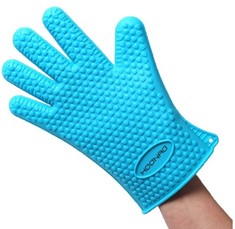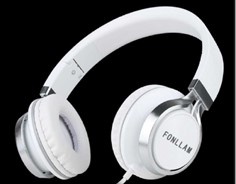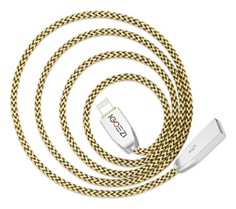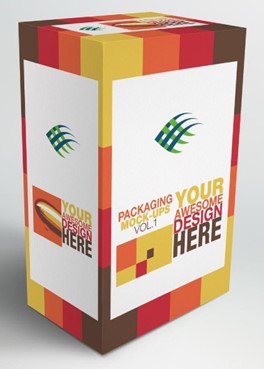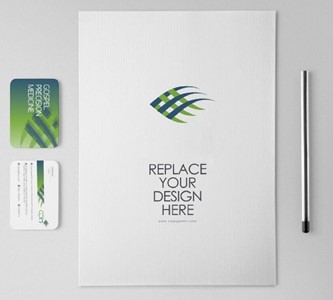This is Part III in a series on establishing use in commerce in the US for federal trademark purposes. Part I was “Common Questions: How to Establish US Trademark Rights.” Part II was “Common Questions: How to Prove Use in Commerce (Specimens)“. This Part III will discuss a recently announced pilot program of the USPTO to minimize the submission of fraudulent trademark specimens in support of applications for registration.
On March 6, 2018, the USPTO announced that it was launching a pilot program to uncover fraudulent specimens filed in support of use-based applications. The USPTO described these specimens as “digitally altered” or manipulated. For instance, the USPTO recently refused registration to the following use-based applications for which the specimens were held to be fake:
| OVEN MITT
|
Specimens appear digitally altered – thus permitting at least three different applications submitted by different applicants (compare the specimens submitted in connection with the each of the following applications):
|
| HEADPHONES
|
Specimens appear digitally altered – again allowing for multiple applicants to submit identical specimens that only change the name of the mark applied to the goods.
|
| USB CABLE
|
Again, the specimens for these applied-for marks were digitally altered
|
In the case of the GBATERI application for registration in connection with USB cables and other goods, the USPTO not only rejected the specimens as digitally-altered mockups that fail to show use in commerce of the actual mark, the USPTO required the applicant to submit additional detailed information proving use. Such additional proof is not normally required in support of an application, but applicants should ensure that they have information like this available to submit promptly (to avoid delaying the prosecution of the application) if the USPTO requests it.
The Examining Attorney explained,
A specimen must show the mark as used in commerce, which means use in the ordinary course of trade (not merely to reserve a right in the mark). 15 U.S.C. §§1051, 1052, 1127. A specimen shows a mark used in commerce for goods only if it shows the mark placed on the goods, packaging, tags or labels affixed to the goods, or displays of the goods at their point of sale, and the goods are actually sold or transported for sale in commerce. 15 U.S.C. §1127. Because the specimen of record appears to be digitally created or altered, or otherwise a mock-up, it does not appear to show the mark as actually used in commerce. Therefore, to permit proper examination of the application, applicant must submit additional information for the record about the specimen and how the mark as shown in the specimen is in use in commerce with applicant’s goods. See 37 C.F.R. §2.61(b); TMEP §814.
The Examining Attorney thereafter asked the following questions and indicated that the applicant was required to respond to all and provide documentary evidence “to satisfy the following requests for information:”
- Applicant must specifically state for the record whether the goods shown in the specimen submission actually bear the proposed mark on the hangtag and the label as shown when sold in U.S. commerce.
- Please provide copies of invoices, bills of sale, or other documentation of sales of the goods.
- Applicant must specifically state whether the specimens show the applicant’s product as it is currently being sold to consumers in U.S. commerce.
- Applicant must state whether it is aware of the attached pending U.S. Trademark Application Serial Nos. 87386209 (MERBYE) and 87355439 (IGOEZI) which contain specimens that are identical or similar to the product specimen submitted with this application, and which are filed by different third parties. (Attaching copies.)
- If Applicant answered in the affirmative to the previous question, please explain in detail the nature and extent of this awareness, including any connection between Applicant and the other third-party applicants.
- If the identified goods bearing the mark are sold in stores, Applicant must provide photos showing the goods in store locations. If these goods are sold in another type of sales environment, Applicant must provide evidence showing the goods for sale in that environment. If these goods are available for sale online, Applicant must provide images of websites showing the goods for sale.
-
If the information in question (6) about how the goods appear in the actual sales environment is not available to applicant, then please describe how applicant’s goods are transported for sale and provide photos and other documentation showing how applicant’s mark appears on the goods and/or its packaging when the goods are being transported for sale.”
- Note that each of these additional questions can also be instructive to legitimate applicants regarding the types of information that can be used to support a new application.
In another case, an applicant submitted clear printer’s proofs in support of its application. See specimens submitted in support of Serial No.: 87/297,677 (below are copies of the actual specimens submitted). For comparison purposes, the applied for mark appears on the far left, but the center and right-hand pictures show mockups actually submitted to the USPTO in support of its application. Note the use of “Packaging Mock-Ups Vol. 1” and “Your Awesome Design HERE” or “Replace Your Design Here” in these drawings.
| Drawing | Specimens | |
|
|
|
|
The Applicant in this matter ultimately withdrew its “use” filing basis and indicated it only had a bona fide “intent to use” – which will allow the Applicant to begin to actually use the mark in commerce and submit actual specimens once use can be shown.
CONCLUSIONS
There are certain types of specimens that will always be rejected: 1) digitally altered specimens, like the oven mitt, headphones and USB cable shown above; 2) mock ups that have not yet been launched into commerce, like the fish designs above; and 3) printer’s proofs, which show how the mark is intended to be used, but are clearly not the final version of artwork (see USPTO Glossary, under “Printer’s Proofs”).
In all three examples, the specimens do not show actual use in commerce, but instead perhaps show what an applicant might want its use in commerce to look like after a product is launched. As the U.S. trademark system is not a “first to file” system but instead is a use-based system, aspirational submissions like this should be avoided.
